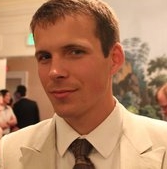Program Information
Compliance with AAPM, ACR, TJC Guidelines on CT Clinical Practice

T Szczykutowicz
I Reiser
A Browne
T Szczykutowicz1*, I Reiser2*, A Browne3*, (1) University Wisconsin-Madison, Madison, WI, (2) The University of Chicago, Chicago, IL, (3) The Joint Commission, Indianapolis, IN
Presentations
1:45 PM : Overview of resources available for CT Protocol Optimization - T Szczykutowicz, Presenting Author2:00 PM : Real World CT Protocol Optimization: Developing Dose and Protocol Monitoring from Scratch - I Reiser, Presenting Author
2:15 PM : Joint Commission Diagnostic Imaging Requirements: Survey Results Update - A Browne, Presenting Author
TU-F-201-0 (Tuesday, August 1, 2017) 1:45 PM - 2:45 PM Room: 201
The role of a medical physicist involved with clinical CT activities is changing rapidly. No longer is the physicist responsible for simply ensuring scanner QA. This shift is evident by looking at the trend to regulate more and more aspects of what activities must be performed to keep a CT practice within compliance. Realizing that most centers do not have the resources to devote even part time FTE towards this effort from CT technologists, physicists, or radiologists, this year’s symposium will focus on real world solutions to CT protocol optimization. The session will begin with a representative from the Joint Commission, who will provide an overview of recent trends in auditor findings. This presentation will be followed by an overview of free and publically available resources like those provided by the AAPM Alliance for Quality in Computed Tomography, the CTisus website, Radiance, and others. Lastly, real-life strategies for protocol and dose monitoring at an academic institution will be presented, which do not rely on customized in-house IT solutions, but were developed using generally available open-source software and standard IT infrastructure such as python and microsoft sharepoint. The session will conclude with a general discussion and question and answer session.
Learning Objectives:
1. Understand the ACR, Joint Commission, and aspects of several state regulations/guidelines most relevant to medical physicists.
2. Come away with an understanding of publicly available tools and resources to aide in CT protocol optimization. A handout will be created outlining all of these resources.
3. Understand how to implement real world regulatory complaint solutions without the aid of custom IT solutions or full time dedicated personnel.
Funding Support, Disclosures, and Conflict of Interest: T. P. Szczykutowicz received an equipment grant from and is a consultant to GE Healthcare, supplies CT protocols to GE Healthcare under a licensing agreement, and is the founder of protocolshare.org.
Handouts
- 127-35537-418554-127014-425067081.pdf (T Szczykutowicz)
- 127-35538-418554-125553-2120075877.pdf (I Reiser)
- 127-35539-418554-126105.pdf (A Browne)
Contact Email:


